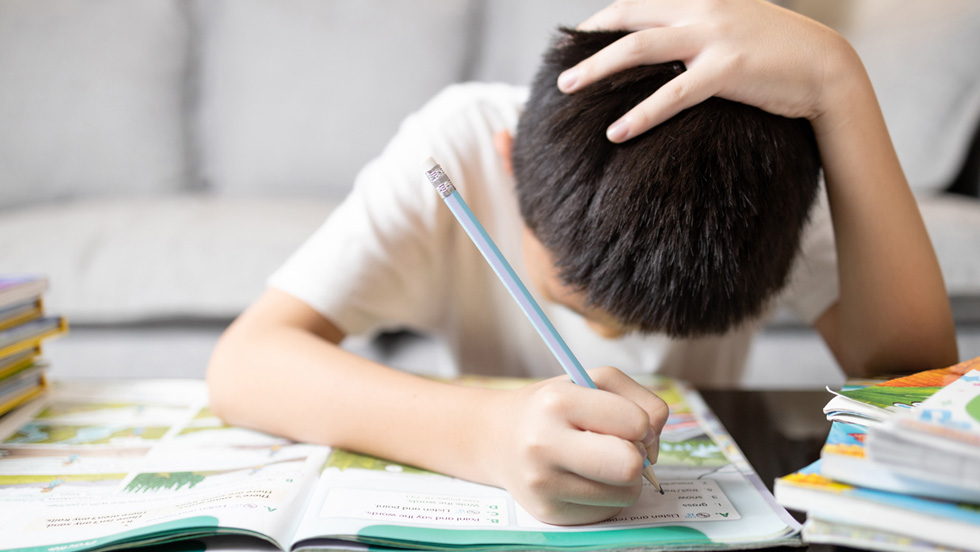
Laura E. Brumariu, PhD, professor and associate dean for professional programs and student advancement in the Gordon F. Derner School of Psychology, knows that the transition from tween to teen is often fraught with apprehension and anxiety. Seldom are these worries more evident than in the transition from primary to middle school.
To explore this topic, Dr. Brumariu, with fellow psychologists and researchers from the Alexandru Ioan Cuza University in Romania, co-authored a paper that was published in the Journal of Research on Adolescence.
The study, “Still worried? Parental control and academic competence as antecedents of middle school students’ post-transition worries,” was conducted from 2020 to 2023 in Romania, where students typically attend primary school through fourth grade and enter middle school in grade five.
This publication is among the latest of Dr. Brumariu’s research as a Derner faculty member that explores how and why children’s relationships with attachment figures influence their social and emotional development. Her specific focus is on developing and testing models that can help to understand how parent-child attachment, in combination with other risk and protective factors—like child temperament, peer relationships and emotion regulation, or parental psychopathology and parenting—may predict the development or maintenance of childhood anxiety.
Dr. Brumariu and her co-authors considered if parental psychological control, or PCP, reported by Romanian students at the end of fourth grade increased their worries as they looked ahead to fifth grade. They also explored how students’ feelings of academic competence and moving to a new school building mediated and moderated PCP and post-transition worries.
A Normal Part of Growing Up
“Pre-transition academic and social worries about whether they’ll have friends, be popular, do well academically and fit in in a new classroom environment are a normal part of life,” said Dr. Brumariu. “But when children have high-level worries about transition that they can’t control, it is a concern.”
According to her, while middle school presents challenges that can include everything from the onset of puberty and forming new academic interests to making new friends and gaining autonomy, it is also a time of opportunity and growth.
However, students who reported experiencing PCP often don’t see the opportunities that are an intrinsic part of the transition to middle school. “PCP is not about behavioral control,” Dr. Brumariu explained. “It refers to parenting that relies on manipulating a child’s emotional needs by saying, for instance, ‘If you don’t study hard, I’m not going to like it.’”
She added that PCP can also nurture dependency and stifle a child’s developing self-identity with a stifling, controlling closeness and the pressure of unrealistic expectations of achievement.
“There are ways for parents to help their children gain a sense of self-mastery, self-esteem and self-confidence,” Dr. Brumariu explained. Problem-solving together and listening, validating and constructively addressing a child’s feelings and fears—including if they are anchored in reality or if they are misconstrued ways of thinking—can help ease this period of transition.
The Importance of Student Self-Confidence
PCP affects children’s worries. Once the study’s participating students moved up to fifth grade, the researchers asked whether their worries about school transition they had reported the semester before in fourth grade had persisted and if yes, why.
The researchers uniquely found that the children’s perception of dependency-oriented PCP and post-transition worries was, in fact, mediated by their positive perception of their academic competence and confidence.
“Children with greater confidence had fewer academic worries,” Dr. Brumariu reported. “A key finding was the importance of children being able to develop a balanced, positive view of themselves. Seeing themselves in a good way helps them to have fewer worries about transition to middle school.”
Conversely, she indicated that children whose parents exerted more dependence control had less, or negative, self-confidence—and more worries.
Most Romanian children may face fewer changes when they stay in their same schools as middle schoolers, but those who move on to different schools face the additional challenges—and pre- and post-transition worries—that a shift in venue and new environment can prompt.
Dr. Brumariu’s project advanced existing literature by considering how a physical change of schools, if viewed as either a source for additional anxiety or a positive academic and social opportunity, could potentially moderate effects between students’ perceived PCP and post-transition worries. When children changed schools, they had higher levels of worries when they perceived lower levels of achievement-oriented PPC and higher levels of dependency-oriented PPC, suggesting that achievement-oriented PPC may signal some parental concern and involvement, and dependency-oriented PPC may contribute to insecurities in the specific context of physical transition.
Smoothing the School Transition
“Normalizing school transitions and their changes are part of all educational systems,” Dr. Brumariu stated. According to her, summer meetings between new students, school visits, advising parents to give academic support and allow autonomy—and to listen, validate feelings and try to problem solve—can all help ease the transition to middle school.
At the end of the day, Dr. Brumariu believes that ongoing and open communication between school and home—parents and teachers, as well as parents and children—is especially critical during transitional times and is a key to ultimately alleviating a lot of worries and apprehensions.